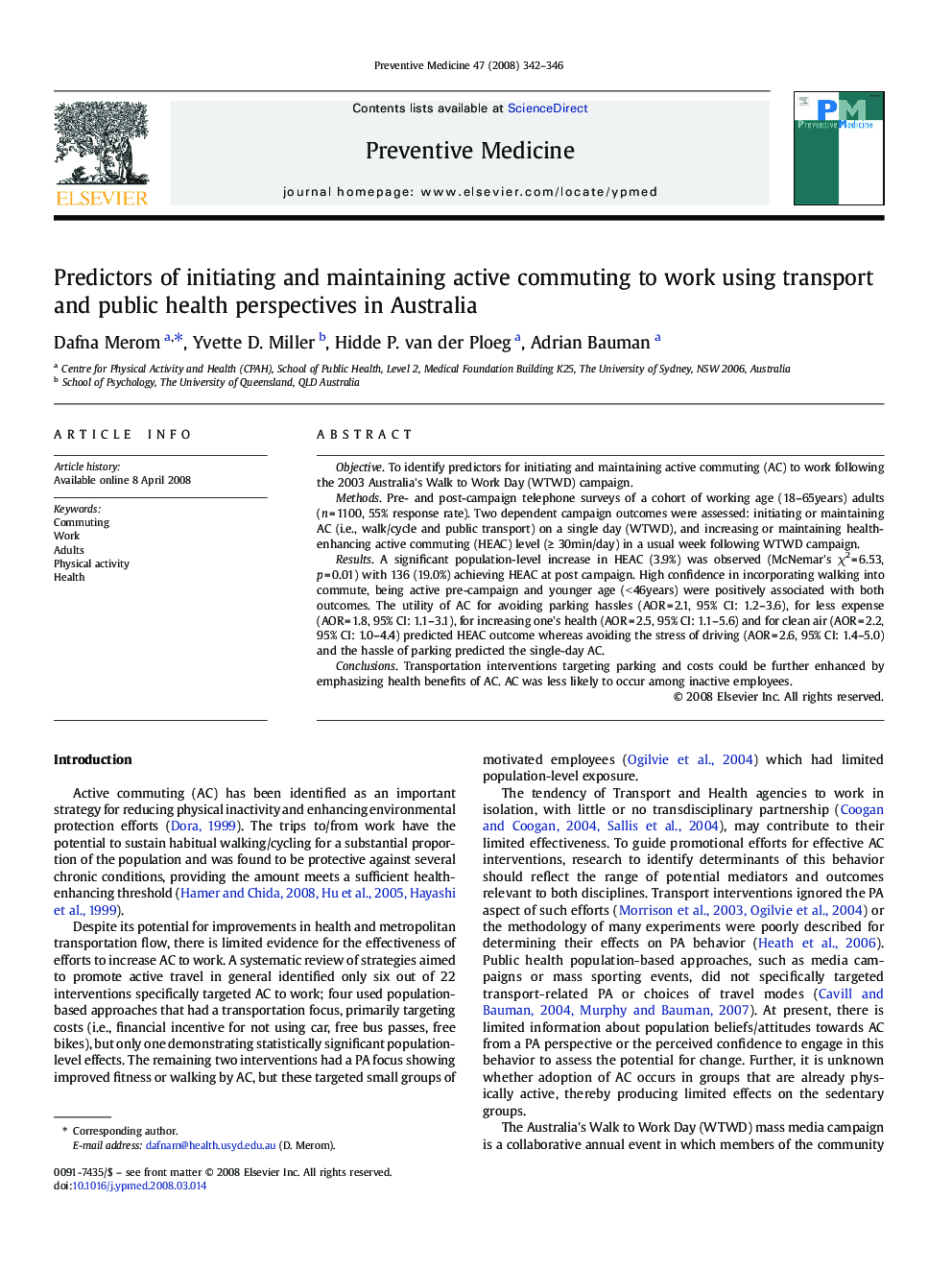| Article ID | Journal | Published Year | Pages | File Type |
|---|---|---|---|---|
| 3101633 | Preventive Medicine | 2008 | 5 Pages |
ObjectiveTo identify predictors for initiating and maintaining active commuting (AC) to work following the 2003 Australia's Walk to Work Day (WTWD) campaign.MethodsPre- and post-campaign telephone surveys of a cohort of working age (18–65years) adults (n = 1100, 55% response rate). Two dependent campaign outcomes were assessed: initiating or maintaining AC (i.e., walk/cycle and public transport) on a single day (WTWD), and increasing or maintaining health-enhancing active commuting (HEAC) level (≥ 30min/day) in a usual week following WTWD campaign.ResultsA significant population-level increase in HEAC (3.9%) was observed (McNemar's χ2 = 6.53, p = 0.01) with 136 (19.0%) achieving HEAC at post campaign. High confidence in incorporating walking into commute, being active pre-campaign and younger age (< 46years) were positively associated with both outcomes. The utility of AC for avoiding parking hassles (AOR = 2.1, 95% CI: 1.2–3.6), for less expense (AOR = 1.8, 95% CI: 1.1–3.1), for increasing one's health (AOR = 2.5, 95% CI: 1.1–5.6) and for clean air (AOR = 2.2, 95% CI: 1.0–4.4) predicted HEAC outcome whereas avoiding the stress of driving (AOR = 2.6, 95% CI: 1.4–5.0) and the hassle of parking predicted the single-day AC.ConclusionsTransportation interventions targeting parking and costs could be further enhanced by emphasizing health benefits of AC. AC was less likely to occur among inactive employees.
